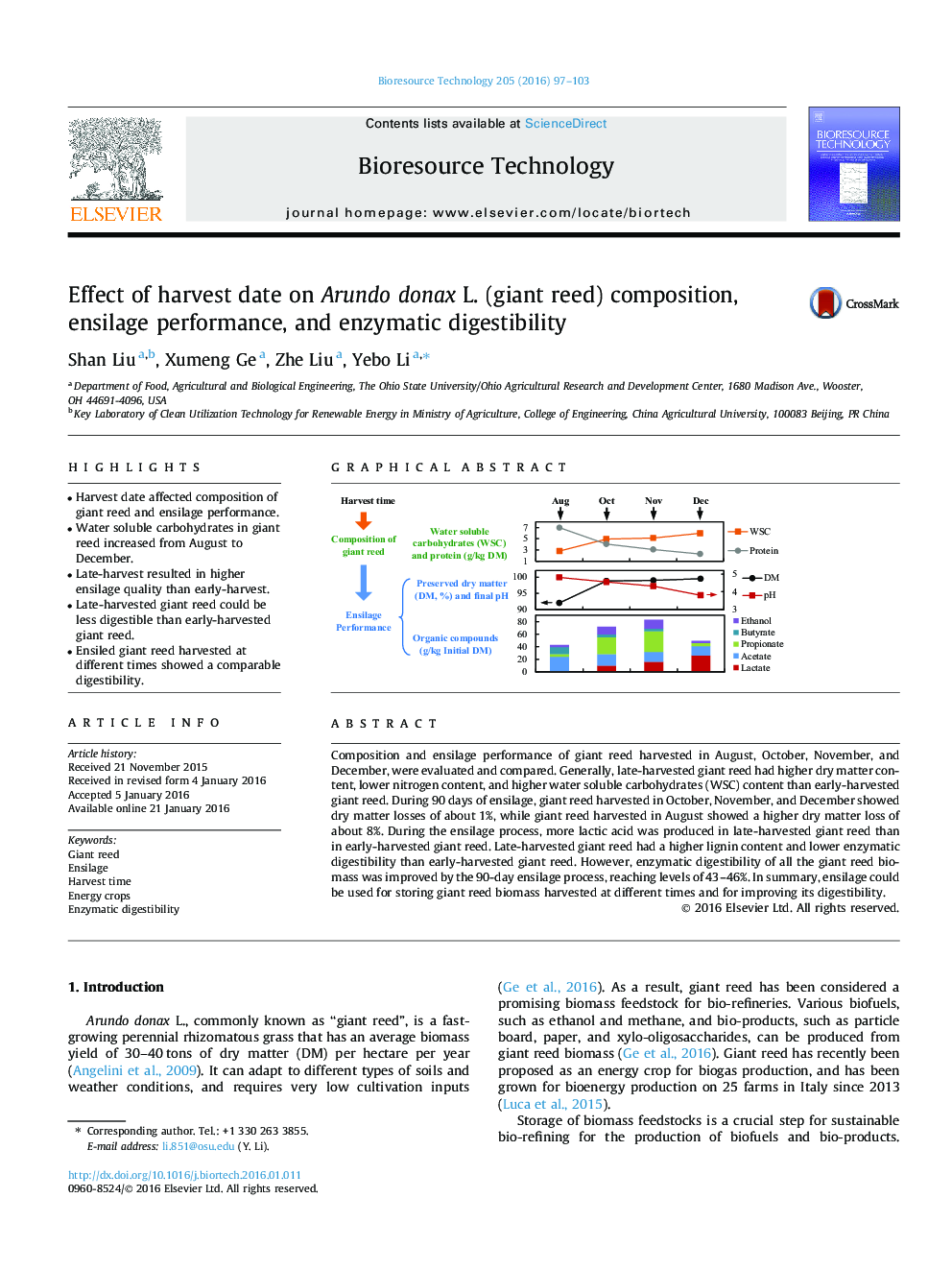| Article ID | Journal | Published Year | Pages | File Type |
|---|---|---|---|---|
| 679268 | Bioresource Technology | 2016 | 7 Pages |
•Harvest date affected composition of giant reed and ensilage performance.•Water soluble carbohydrates in giant reed increased from August to December.•Late-harvest resulted in higher ensilage quality than early-harvest.•Late-harvested giant reed could be less digestible than early-harvested giant reed.•Ensiled giant reed harvested at different times showed a comparable digestibility.
Composition and ensilage performance of giant reed harvested in August, October, November, and December, were evaluated and compared. Generally, late-harvested giant reed had higher dry matter content, lower nitrogen content, and higher water soluble carbohydrates (WSC) content than early-harvested giant reed. During 90 days of ensilage, giant reed harvested in October, November, and December showed dry matter losses of about 1%, while giant reed harvested in August showed a higher dry matter loss of about 8%. During the ensilage process, more lactic acid was produced in late-harvested giant reed than in early-harvested giant reed. Late-harvested giant reed had a higher lignin content and lower enzymatic digestibility than early-harvested giant reed. However, enzymatic digestibility of all the giant reed biomass was improved by the 90-day ensilage process, reaching levels of 43–46%. In summary, ensilage could be used for storing giant reed biomass harvested at different times and for improving its digestibility.
Graphical abstractFigure optionsDownload full-size imageDownload as PowerPoint slide
